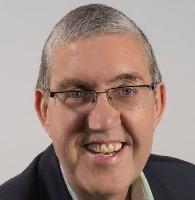Ross Harvey is Professor at Monash University in Melbourne, Australia
I’ve been thinking lately about the maturing of digital preservation. Exactly when it was born is difficult to determine. Wikipedia’s ‘Timeline of Digital Preservation’[1] starts in 1972, and Peter Hirtle suggests ‘at least the 1960s’.[2] Other contenders include the establishment of data archives in the 1960s. But although its precise age is debatable, we can agree that digital preservation has been around long enough to have developed processes, standards, theories, and ways of thinking that the digital preservation community generally accepts. For example, that the OAIS Reference Model is the basis for digital preservation systems, or that we need geographically-distributed copies – although there is no consensus about how many.
After more than three decades of experience, digital preservation’s maturing is evident in its systems, practices, and standards. There’s plenty of evidence to back up this statement. Jaye Weatherburn and I have written about how the field has changed since 2005.[3] The 2018 iPRES conference included sessions on taking stock after 15 years of iPRES conferences.
With maturity comes reflection. It is time to step back, reflect on our digital preservation practices, interrogate fundamental principles. We must look at the bigger picture, ask what is digital preservation, who is doing it, who are we doing it for, how do we diversify it, how can we advocate for it better?
We have all lived through our own coming of age, so we know that it isn’t all beer and skittles. Hand in hand with the good bits comes the parts we don’t want. Digital preservation has been round long enough to develop bad habits.
One bad habit we acquired is the emphasis placed on format obsolescence. Despite mounting evidence to the contrary, we still insist on addressing format obsolescence as a major challenge to digital continuity. Much digital preservation effort has focussed on ways to address it. But it turns out that format obsolescence is less of a threat than we considered it to be in the 1980s and 1990s. William Kilbride suggests that “the economic forces that shaped the 1980s and 1990s created the norms of the digital universe we occupy today and thus, digital preservation.”[4] In today’s environment many factors combine to minimise the threats of format obsolescence, so we should be putting our research and development efforts elsewhere.
Another area where more reflection is required is who we do digital preservation for. Digital preservation is too often discussed in ways that apply only to large, well-resourced institutions. But they cannot carry responsibility for digital preservation in isolation. We need to identify new stakeholders and persuade them to contribute. We have a challenge: to translate current practices into practices that work for a much wider range of players.
It is imperative that we energetically continue the debate and pose – not for the first time – basic questions:
- What is digital preservation?
- Why we are preserving digital information?
- For whom are we preserving it?
- Who is responsible for digital preservation?
- How do we get more diversity among its participants?
- Is the way we do digital preservation really the best way?
- What to preserve?
- What aspects of it are important to keep?
- How can we advocate better for digital preservation?
Another important question is whether we are doing too much, whether our current understanding of best practice is unrealistic and unsustainable. Do we need to more fully embrace ‘parsimonious preservation’?[5] Can we afford to aim for perfect? The digital preservation community has adopted the OAIS Reference Model as a key standard. OAIS was initially developed by the space data community, where perfect is essential to keep safe astronauts in space shuttles. Is it applicable in other contexts?
It is time to revisit these questions in an organised, collaborative way. If we don’t, we can’t expand digital preservation much beyond its current confined environments. We need to move from a situation where the largest collecting institutions and big businesses are the primary actors, to one in which ALL data creators become the primary actors and are empowered to take digital preservation action, where the first thought of everyone who creates digital materials is ‘how do I make this preservable?’, where preservation is intrinsic to digital materials and not something added after the fact.
[1] https://en.wikipedia.org/wiki/Timeline_of_digital_preservation
[2] Peter B. Hirtle, ‘The History and Current State of Digital Preservation in the United States’ in Metadata And Digital Collections: A Festschrift in Honor of Thomas P. Turner (Cornell University Library Initiatives in Publishing, 2008). p.123.
[3] Ross Harvey and Jaye Weatherburn, Preserving Digital Materials 3rd ed. (Rowman & Littlefield, 2018), chapter 10.
[4] William Kilbride, ‘No End of History’, Digital Preservation Coalition Blog, 15 June 2017, https://www.dpconline.org/blog/no-end-of-history
[5] http://www.nationalarchives.gov.uk/documents/information-management/parsimonious-preservation.pdf
